Abstract
The shoulder pain is one of the most common problems to orthopaedic surgeons in clinic. Among therapeutic modality used to manage this pain, joint and periarticular injection, as well as suprascapular nerve block, show good clinical outcome. Ultrasound guidance is a safe technique, increasing the safety and accuracy of the procedure and reducing complications. An accurate understanding of the surface anatomy is important in performing the ultrasound-guided shoulder injections. This article aims to describe the surface anatomy and sono anatomy of both the shoulder and the surrounding structures and also summarize different infiltration techniques and peripheral nerve blocks.
Go to : 
References
1. Hackett GS, Hemwall GA, Montgomery GA. Ligament and tendon relaxation (skeletal disability) treated by prolotherapy (fibro-osseous proliferation). Springfield;Charles C. Thomas: 1993. 139–295. 25–51.
2. Hauser RA, Hauser MA, Pottinger K. Prolo your pain away!: curing chronic pain with prolotherapy. Oak Park: Beulah Land Press;1998. 71–194. 31–40. 1–8. 35–40. 25–26.
3. Martinoli C, Bianchi S, Prato N. . US of the shoulder: non-rotator cuff disorders. Radiographics. 2003. 23:381–401; quiz 534.

4. O’Neill J. Musculoskeletal ultrasound: anatomy and technique. New York: Springer New York;2008. 21–54.
5. Bach HG, Goldberg BA. Posterior capsular contracture of the shoulder. J Am Acad Orthop Surg. 2006. 14:265–77.

7. Farin PU. Sonography of the biceps tendon of the shoulder: normal and pathologic findings. J Clin Ultrasound. 1996. 24:309–16.

8. Neviaser AS, Neviaser RJ. Adhesive capsulitis of the shoulder. J Am Acad Orthop Surg. 2011. 19:536–42.

9. Lee DH, Hong JY, Lee MY, Kwack KS, Yoon SH. Relation between subacromial bursitis on ultrasonography and efficacy of subacromial corticosteroid injection in rotator cuff disease: a prospective comparison study. Arch Phys Med Rehabil. 2017. 98:881–7.

10. Chen MJ, Lew HL, Hsu TC. . Ultrasound-guided shoulder injections in the treatment of subacromial bursitis. Am J Phys Med Rehabil. 2006. 85:31–5.

11. Laktasić-Zerjavić N. [Standardised ultrasound scanning of the elbow]. Reumatizam. 2010. 57::62-7. Croatian..
12. Radunovic G, Vlad V, Micu MC. . Ultrasound assessment of the elbow. Med Ultrason. 2012. 14:141–6.
13. Lee SM, Park SE, Nam YS. . Analgesic effectiveness of nerve block in shoulder arthroscopy: comparison between interscalene, suprascapular and axillary nerve blocks. Knee Surg Sports Traumatol Arthrosc. 2012. 20:2573–8.

Go to : 
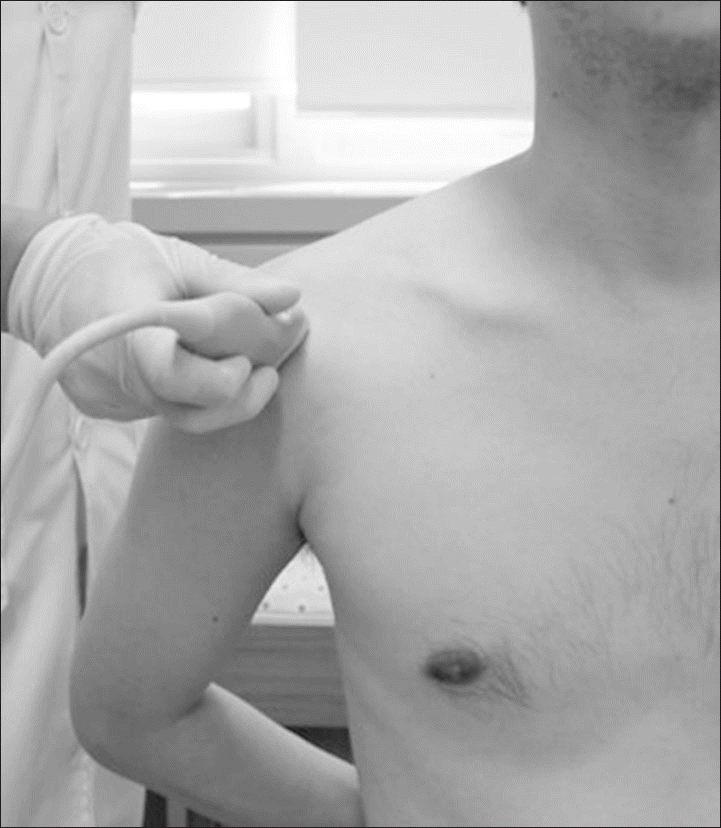 | Figure 1.Crass position is performed with a posteriorly extended arm, flexed elbow and internal rotation of shoulder for evaluation of the supraspinatus. |
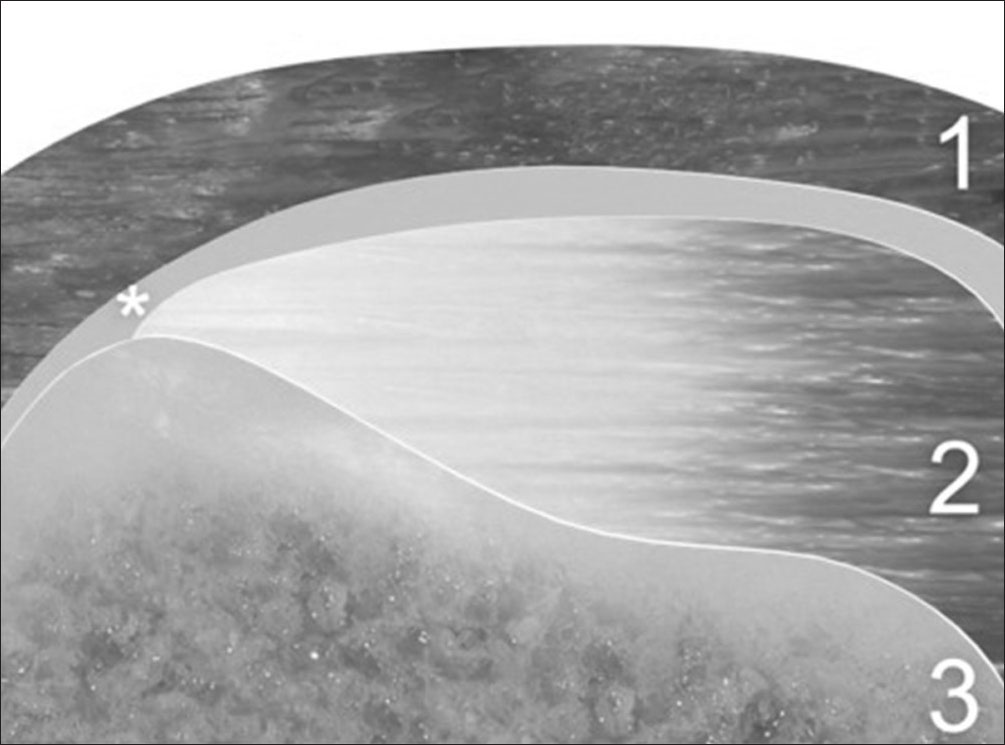 | Figure 2.Illustration of supraspinatus tendon. ∗Sub-deltoid bursa. 1, deltoid layer; 2, supraspinatus tendon; 3, greater tuberosity. |
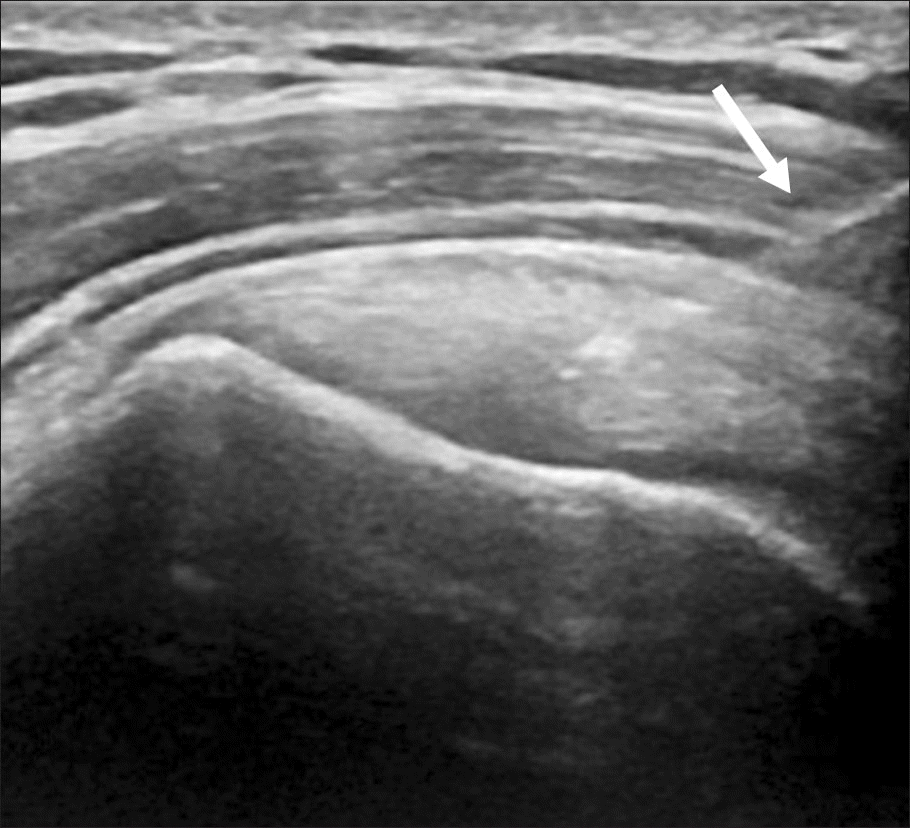 | Figure 3.Supraspinatus tendon. Probe longitudinal to supraspinatus tendon, with shoulder extended and internally rotated. It shows a supraspinatus tendon and needle (white arrow: needle). |
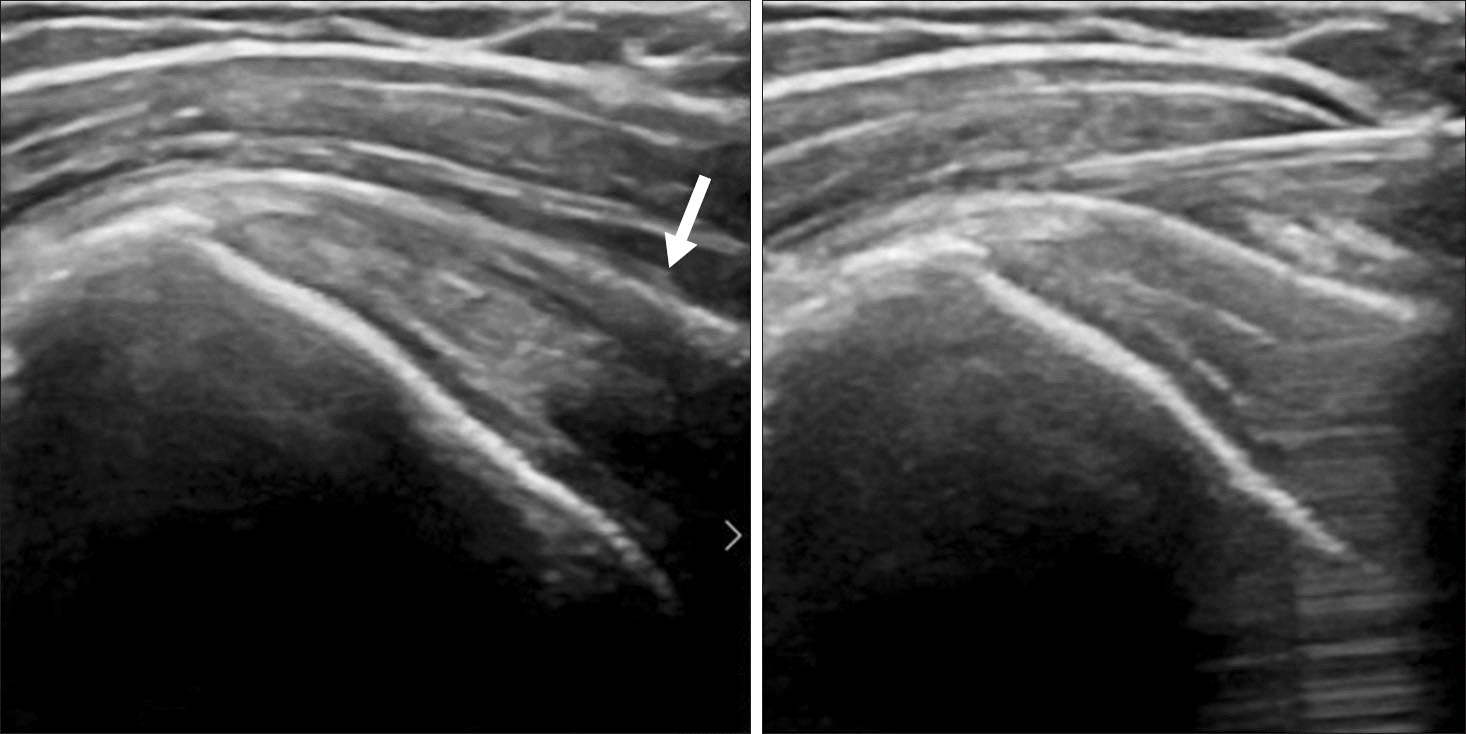 | Figure 4.Subdeltoid bursa. Probe longitudinal to supraspinatus tendon, with shoulder extended and internally rotated (crass position). It shows an edema of sub-deltoid bursa and can easily be injected when the needle bevel is positioned downward (white arrow: subdeltoid bursa). |
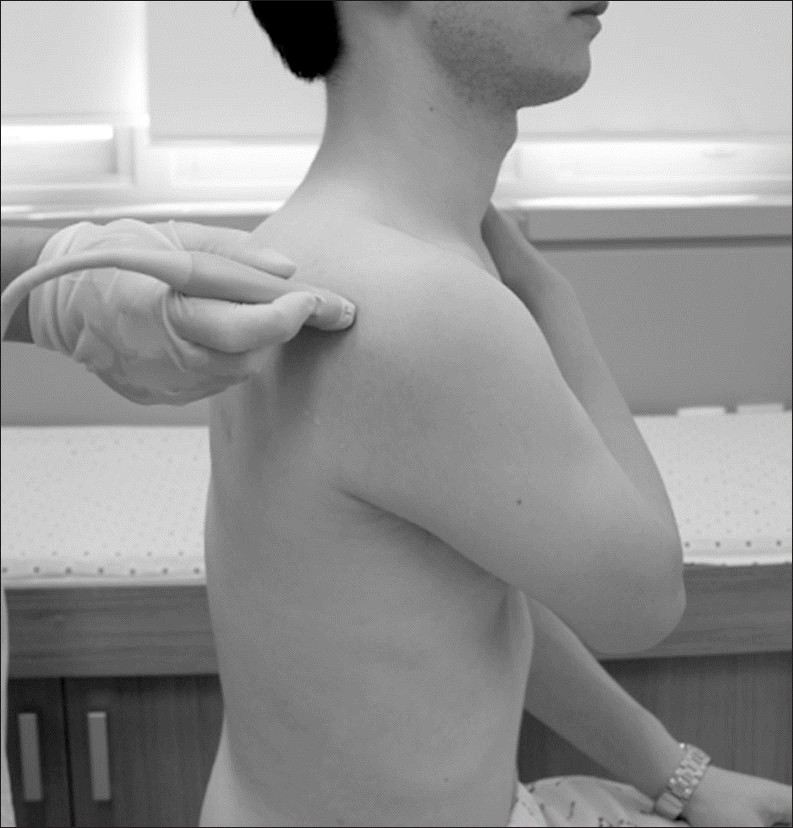 | Figure 5.Position for infraspinatus tendon inspection. Probe longitudinal to infraspinatus tendon, with shoulder flexion and internally rotated. |
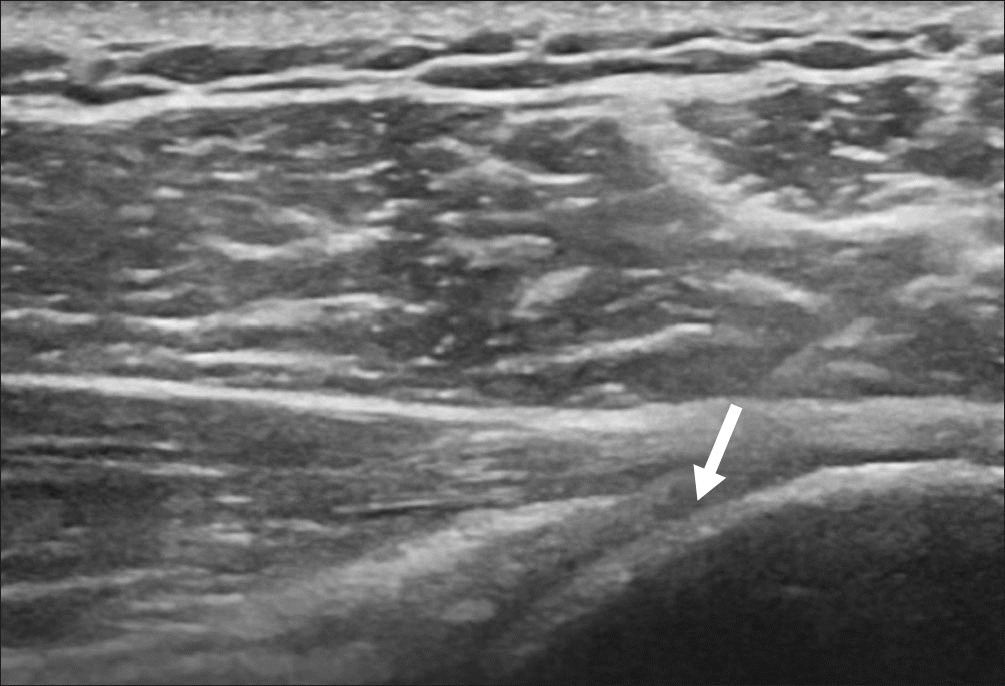 | Figure 6.Infraspinatus muscle or tendon probe longitudinal to infraspinatus tendon, with shoulder flexion and internally rotated (white arrow: infraspinatus tendon). |
 | Figure 7.Calcific tendinitis of supraspinatus tendon (white arrow: calcium deposit, black arrow: needling for decompression of calcium deposit and steroid injection). |
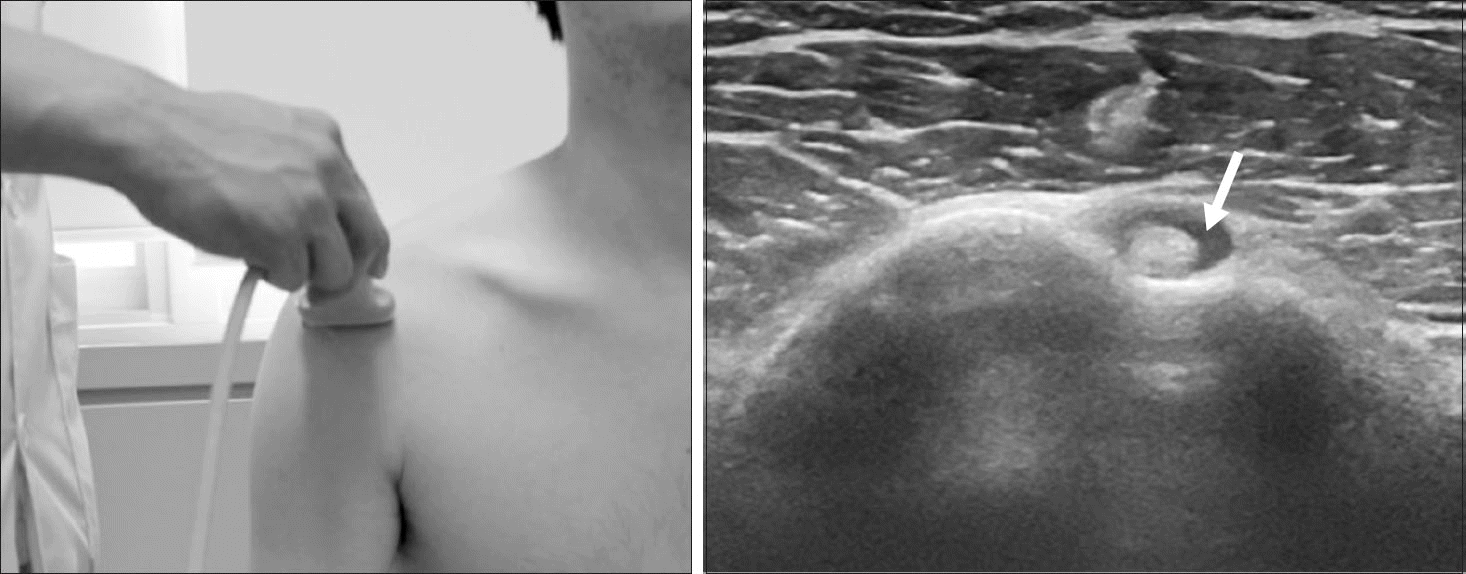 | Figure 8.Biceps long head tendon in bicipital groove. Probe transverse to biceps long head tendon (white arrow: effusion due to tenosynovitis). |
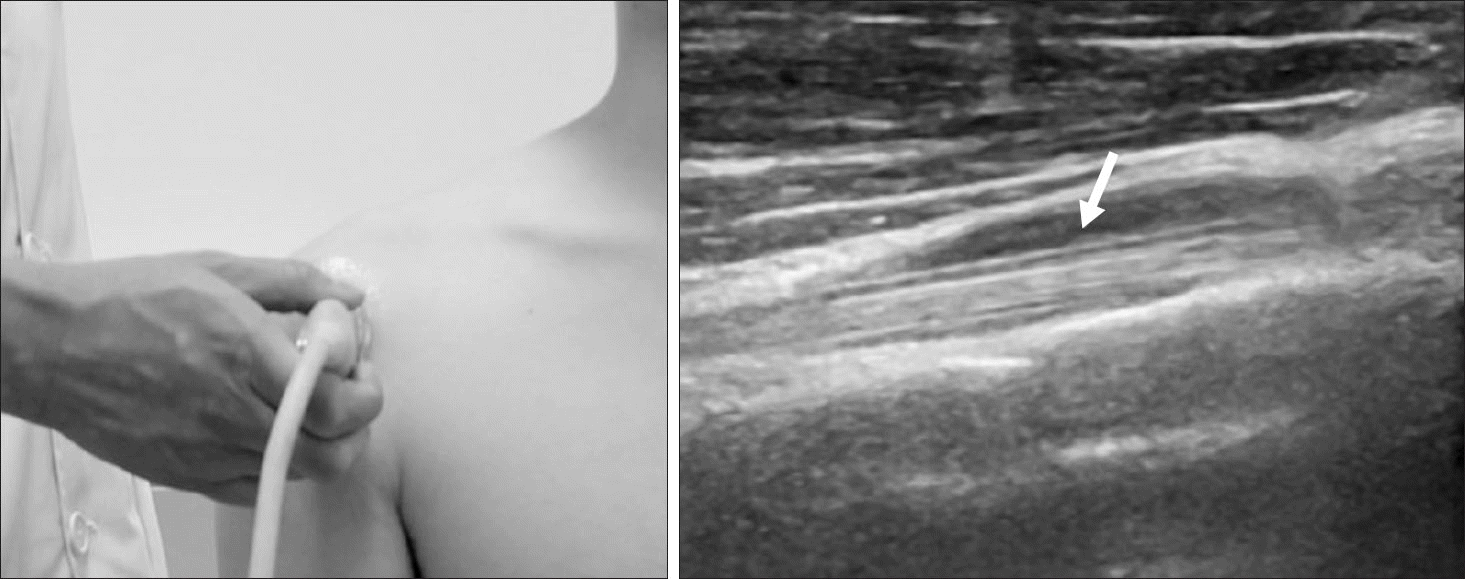 | Figure 9.Biceps long head tendon in bicipital groove. Probe longitudinal to biceps long head tendon (white arrow: effusion due to tenosynovitis). |
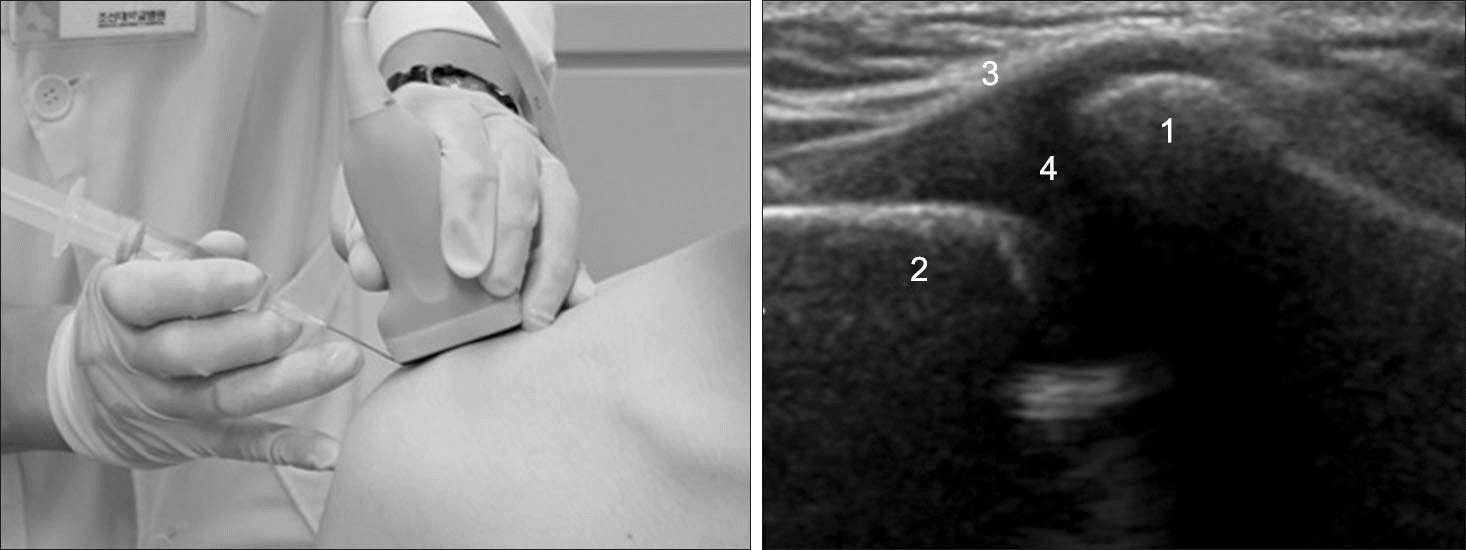 | Figure 10.Acromioclavicular joint. The inset shows the position of the ultrasound probe (coronal plane adjacent to superior aspect of joint. 1, clavicle distal end; 2, acromion; 3, joint capsule; 4, joint cavity. |
 | Figure 11.Posterior approach to the glenohumeral joint. The ultrasound image is shown with the white arrow presenting the needle path between the free edge of the labrum and the hypoechoic articular cartilage of the humeral head. |




 PDF
PDF ePub
ePub Citation
Citation Print
Print


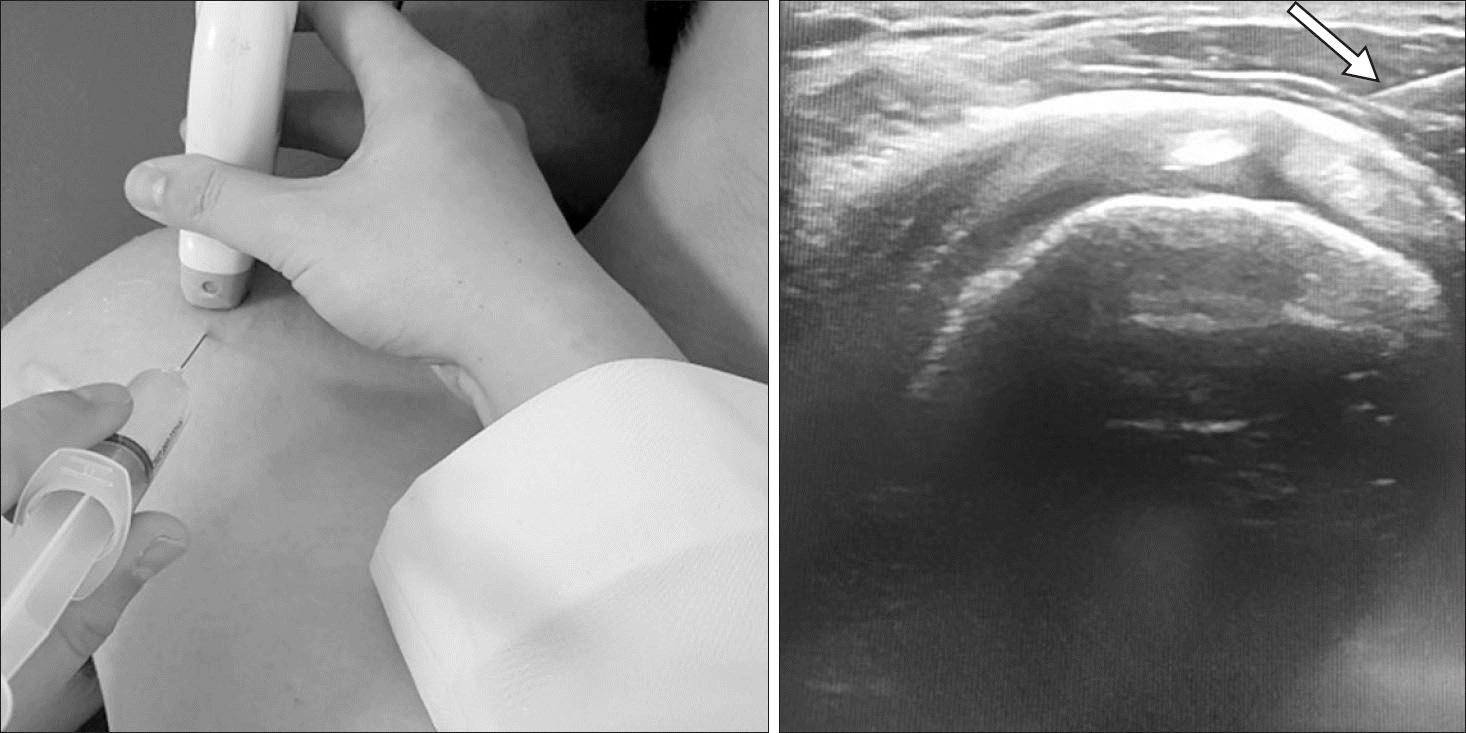
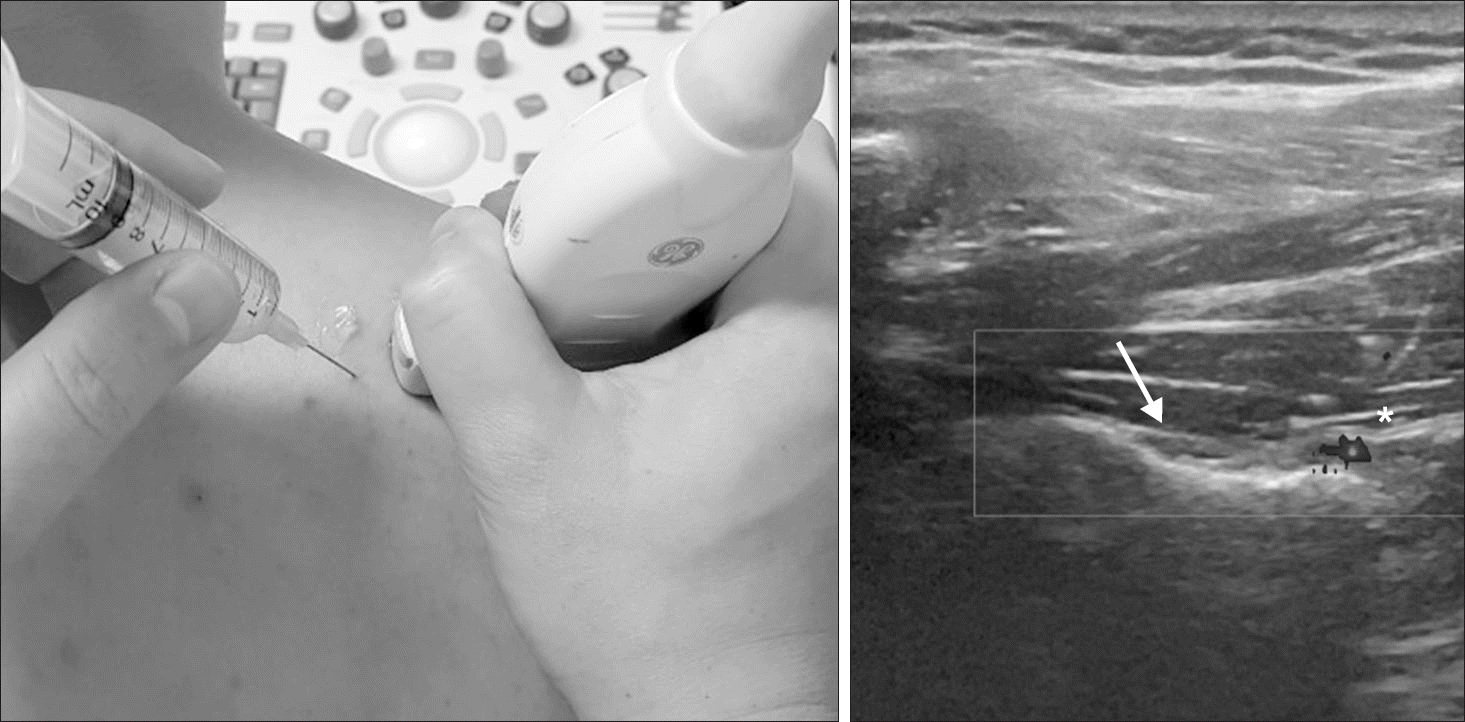
 XML Download
XML Download